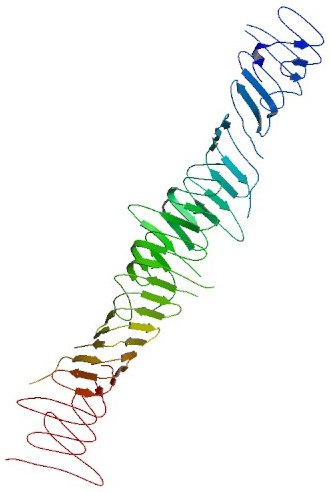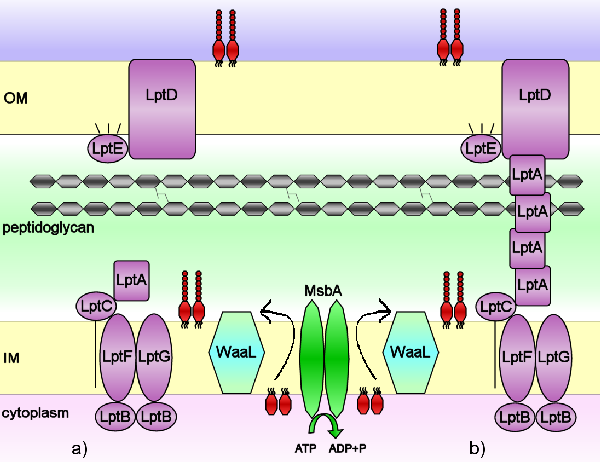Why Study the Lpt System?
 The surface of bacterial cells are covered in polysaccharide molecules, which perform a variety of vital functions such as preventing harmful substances from entering it and facilitating the bacteria’s infection of host cells. If we are able to understand how the bacteria makes, transports and inserts these polysaccharide molecules onto its surface, we can then interfere with and disrupt these processes to our advantage, such as preventing bacterial infection of human cells. In this instance I studied a particular type of polysaccharide molecule called LPS (Lipopolysaccharide) and how it is transported across the double membrane that surrounds a bacterial cell.
The surface of bacterial cells are covered in polysaccharide molecules, which perform a variety of vital functions such as preventing harmful substances from entering it and facilitating the bacteria’s infection of host cells. If we are able to understand how the bacteria makes, transports and inserts these polysaccharide molecules onto its surface, we can then interfere with and disrupt these processes to our advantage, such as preventing bacterial infection of human cells. In this instance I studied a particular type of polysaccharide molecule called LPS (Lipopolysaccharide) and how it is transported across the double membrane that surrounds a bacterial cell.
What Do The Lpt Proteins Do?
The LPS molecule is passed between different protein complexes, beginning with those anchored to the inner membrane, transported across the cytoplasm and passed on to another complex in the outer membrane. We found that the inner membrane anchored LptC binds transiently to the mobile LptA molecule. We also found that LptA does not bind the outer membrane anchored LptE, leading us to suggest that instead it interacts with LptD. Both LptA and LptC were crystallised separately, but crystals could not be grown of the LptAC complex.

- Characterization of Interactions Between LPS transport proteins of the Lpt System
- Biochemical and Biophysical Research Communications (2011) 404 1093-1098
- Bowyer A, Baardsnes J, Ajamian E, Zhang L, Cygler M.



